Mothers Day
Greg Martin
Liberty Wildlife Contributor
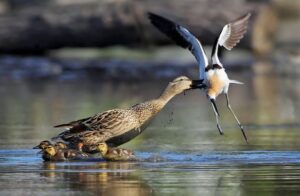
A dark shadow flits ominously over the neighborhood. Doves lazily graze at the front yard feeder, oblivious to the horror circling overhead. High above the rooftops, master of its world, a Peregrine Falcon selects the most conveniently placed target. It circles and then drops, tucking its wings in a total conversion from bird to missile.
An explosion of feathers marks the impact. The dove, battered and dazed, plummets to the driveway. The other diners scatter; the falcon returns to its soaring patrol, just a formality before dropping down to finish the job and get on with the feast.
Meanwhile, you are a female hummingbird, a new mother using your minuscule body to incubate even smaller young. You just watched this entire scene play out from the vantage point of your nest. The falcon leviathan might as well be some medieval dragon, monstrous and immense. Your tree sits next to the feeder … and next to the hapless dove about to become lunch. More than likely, the falcon hasn’t noticed you; even if it has, you and your brood constitute barely a mouthful for the world’s fastest animal.
In this scenario, which actually occurred the first week of May, what would you do?
You are the hummingbird: Do you—
A: Sit perfectly still, hoping it won’t notice you?
B: Flee for your life, returning when it’s safe in case anything remains of your nest?
C: Savagely attack the falcon even though the dispute has nothing to do with you?
The answer, counter-intuitive though it may be, is resoundingly C. As it actually played out, the hummingbird in question mercilessly assaulted the falcon; other nesting hummingbirds joined the fray, chasing it around the neighborhood for a solid five minutes. Like a squadron of maternal Spitfires dogging a German bomber, they drove the far larger predator from their home airspace, nary a thought given to anything but the sanctity of the nest.
Small birds routinely pester larger hawks and falcons, and the ruthless skill of birds of prey in their element is already legendary. But nothing is as fearless, or relentless, as a mother defending her young. Regardless of species, maternal drive is one of the only forces strong enough to supersede the foremost biological imperative, the need to survive; even scorpions gingerly tote dozens of babies on their backs.
Everyone knows the importance of good binoculars to birdwatchers, but few people realize that hard hats rate as mandatory for researchers exploring nesting grounds. Northern Goshawks think nothing of dive bombing adult humans or outright murdering other raptors, according to Cornell University, all for the sake of protecting their offspring.[1] Birds with less overt physical armament must rely on either bravado, in the case of the hummingbirds, or guile, as quail, nightjars, and others do when interlopers approach their young. Such birds take motherly devotion to its apex, flopping around on the ground, feigning broken wings and otherwise trying to offer themselves up as easier targets than their babies. With luck, they can lure the danger away, then double back to home, but even attempting such a gamble is testament to the primacy of motherhood.
That’s not to say that fathers just hang back; I once watched a male quail hurl himself into a full, end-over-end rolling melee against a roadrunner twice his size in order to buy time for his mate and babies to flee. But it takes something truly extraordinary to terrify a falcon out of eating a meal it’s already expended good effort to prepare.
That’s the power (and the fury) of motherly love.
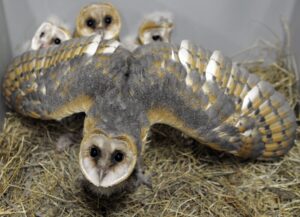
[1]https://www.allaboutbirds.org/guide/Northern_Goshawk/lifehistory
Citizen Science – Conservation Biology for All
Gail Cochrane
Liberty Wildlife Volunteer
Citizen science is a crowd sourcing tool that helps researchers and scientists access data collected by everyday people. Some citizen scientists work independently and others take part in local or regional projects organized by non-profit conservation organizations.
Currently Audubon is holding the Western Rivers Bird Count. From May 1 until the end of June counts are being held in priority birding locations along rivers and streams throughout the west. This year four specific species are being counted in Arizona; Yellow Warblers, Summer Tanagers, Yellow-breasted Chats and Bell’s Vireos. There are sites in the Phoenix, Prescott and Tucson areas.
The biggest citizen science conservation endeavor is Cornell Lab of Ornithology’s eBird. Data gathered from participants across the globe has been built into various maps and charts showing status and trends of bird species and migratory routes. An example of the power of this tool is a partnership eBird entered with The Nature Conservancy and Point Blue Conservation in California. eBird migratory maps were overlaid with information garnered from Point Blue about locations and flooding schedules of rice farms in California. A program of reverse auctions sponsored by The Nature Conservancy enjoined farmers to flood fields when migratory birds were due to arrive. Citizen scientists then posted observations of the visiting flocks, closing the informational loop of the project.
One of the more exciting citizen science projects is iNaturalist. This is a social-networking style website and app available for both iPhones and Androids. Anyone can make contributions to species lists just by snapping a picture of a plant or animal. The app coordinates the picture with GPS and the time and date. Once data is uploaded, users scrutinize and the crowd self-corrects species designations. The record then gets uploaded to the Global Biodiversity Information Facility – a universally accessible biodiversity database used by scientists in big data research projects across the globe.
The ASU library keeps a list of citizen science projects in Arizona as well as virtual projects that can be done from home or school. Some of the Arizona projects include Arizona Bald Eagle Nest Watch, Hummingbirds at Home, Rain Log, Southwest Monarch Study and Saguaro Flower Power Project.
We all face the effects of the climate crisis. Citizen science provides a critical source of local and regional information that can be compiled to form a real time picture of larger trends. As humans become more aware and see nature’s dramas play out in backyards and local open spaces, we can better value our own connection to all of life.
IT’S MADE OF WHAT ?!?!
Claudia Kirscher
Liberty Wildlife Volunteer

Recently, while waiting in line at a community shred event, I began to wonder what was going to happen to all the shredded paper that day. So, I asked. One of the main uses (for this company) was manufacturing those paper flower pots that you just plant along with the flower or vegetable or whatever goes into your garden! My old tax returns pushing up petunias? Well, I like that idea!
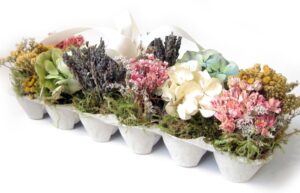
Recycling really does matter.
It is estimated that recycling 1 ton of paper saves 17 mature trees, 7,000 gallons of water, 3 cubic yards of landfill space, 2 barrels of oil, and 4,100 kw hours of electricity – enough energy to power the average American home for six months.
Manufacturing with recycled paper saves more than 40% of energy sources, requires less water and fewer chemicals than with virgin paper production, thus helping to conserve our forests and save landfill space. Recycled paper products (such as recycled newspaper, office paper and cardboard) become paper towels, paper plates, toilet paper, telephone directories, building insulation, biodegradable kitty litter, sheet rock, countertops, and newspapers.
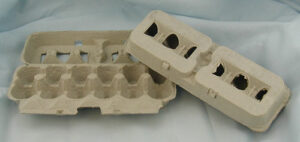
Recycled plastics are being used to create everything from fleece clothing to carpets to park benches. One company creates handbags and accessories from drink-pouch and snack-food wrappers and cork boards from wine corks. Another makes razors and toothbrushes from used yogurt containers. Other companies such as Patagonia, Nike, and Adidas use recycled polyester (plastic bottles) for a variety of products including shirts, leggings, and socks, as well as tennis shoes that are made from recycled shoes.
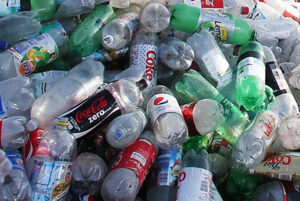
#1 plastic is used in carpets, backpacks, socks, sleeping bags, and jacket insulation.
#2 plastic can be used in plastic lumber for decking and docks, new bottles, buckets, Frisbees, stadium seats, trash cans, traffic barrier cones, and yard furniture.
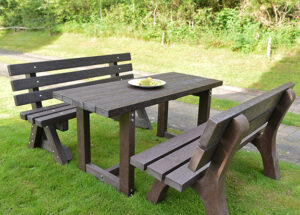
Plastic milk jugs can be recycled into yard furniture as well.

#6 plastic makes license plate frames, park benches, packing peanuts, and dashboards.
- Sherwin-Williams received an EPA green chemistry award for its paint formulation that contains recycled plastic bottles and produces less air pollution than typical oil-based paints.
- Uniforms in Nike’s Pro TurboSpeed collection, worn by Olympians from the U.S. and other nations in London’s Olympic Summer Games 2012, were composed of up to 13 recycled plastic bottles each.
- Ford uses post-consumer recycled plastic bottles in its seat fabric. The company has also developed plastics reinforced with uncommon biomaterials like wheat straw and a plant called kenaf and seat cushion stuffing made of soy-based foam, and is even working on developing plastics reinforced with recycled U.S. currency. “On an average car we use about 300 pounds of plastic,” Angela Harris, Ford biomaterials research engineer, told Earth911.
- A recycling company in Chandler, Arizona recycles old denim jeans and unwanted clothing into fiber for bedding, insulation and coolers. The clothes come from sorting houses, thrift shops and donation bins thus keeping them out of landfills.
Aluminum can be recycled into a lot of different products such as tractor-trailers and car bodies; however, aluminum cans usually become new aluminum cans. It can be recycled indefinitely, returning as a new can in as little as 60 days of being recycled.
All types of used glass containers can be reused indefinitely to make new glass products. Because of lower melting temperatures, it is actually easier to manufacture new glass containers from recycled glass than from raw material. It can also be used for Astroturf, fiberglass insulation products, highway marking beads, and countertops.
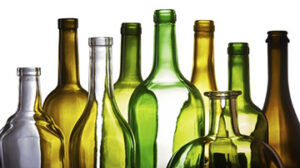
Learn to be a responsible consumer, look for and purchase products with labels that say they contain “Post-consumer material “ (something that was used and recycled). Choose those that have a higher percentage of PCM. Recycle responsibly, putting out only those recyclables accepted by your trash collector. Remember to CLEAN plastics and food containers or they will be refused and go straight to the landfill.
This becomes even more important in light of China now phasing out importing United States waste and recycling materials. What has been shipped to China for recycling is now staying here.
Support legislation to further reduce single-use plastics, reduce packaging and make remaining packaging more recyclable as well as requiring manufacturers to use more recycled content.
What unusual or everyday product have YOU discovered made of post-consumer material?
To read more plus resources for this article: Gwinnettcb.org (Clean & Beautiful); eHOW.com; Earth911; Green Living National Geographic; Livestrong.com; businessinsider.com; recycleeverywhere.ca https://www.recycleeverywhere.ca/recycling-info/what-they-become/
MAKE IT PERSONAL AND BE PART OF THE SOLUTION!
Kid Stuff
Carol Suits
Nurturing Nature

Let’s celebrate Pollinator Week!
June 17 – 23
Meet some pollinators and find out why they’re important to humans.
https://www.youtube.com/watch?v=3bqwcky-01M
Find information and activities for the whole family! http://pollinator.org/pollinator-week#pw-activities
Hummingbirds, bees, bats and butterflies are pollinator-stars in this video.
https://www.youtube.com/watch?v=MQiszdkOwuU&list=PL5Z9r3XgFItDcIrzyrkgLkRMGG0__bYxT.
Puzzles
Pollinator Week! https://www.jigsawplanet.com/?rc=play&pid=1b931f70fbd2
Endangered pollinators https://www.jigsawplanet.com/?rc=play&pid=2b69b886f3cf
Bzzzzzzzzzz! https://www.jigsawplanet.com/?rc=play&pid=0babdb515df7


